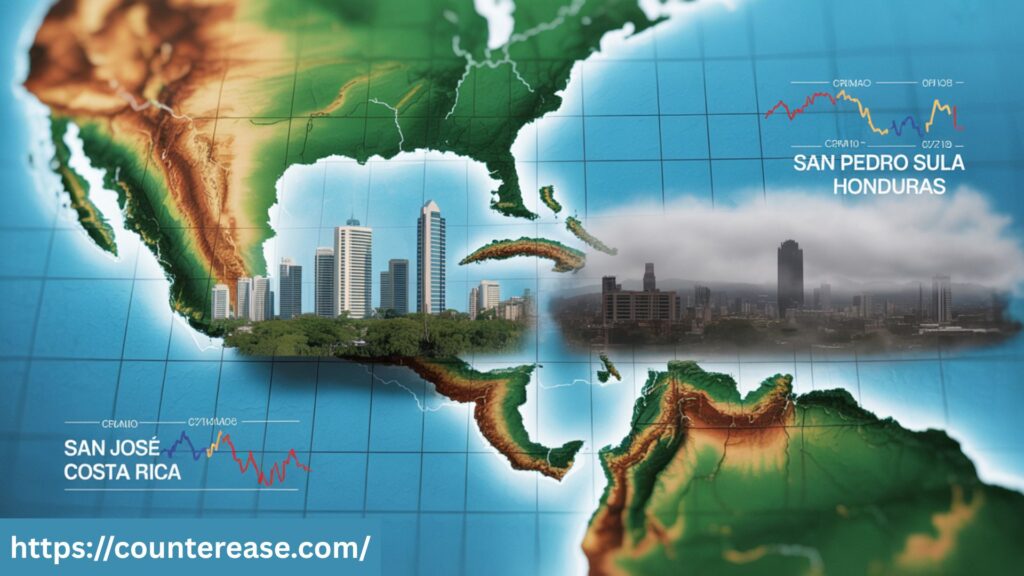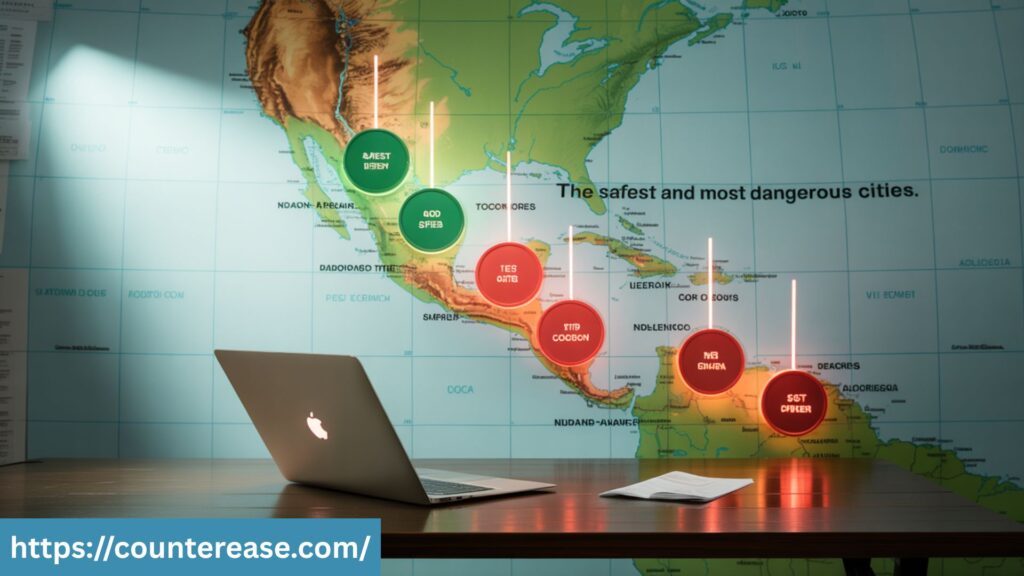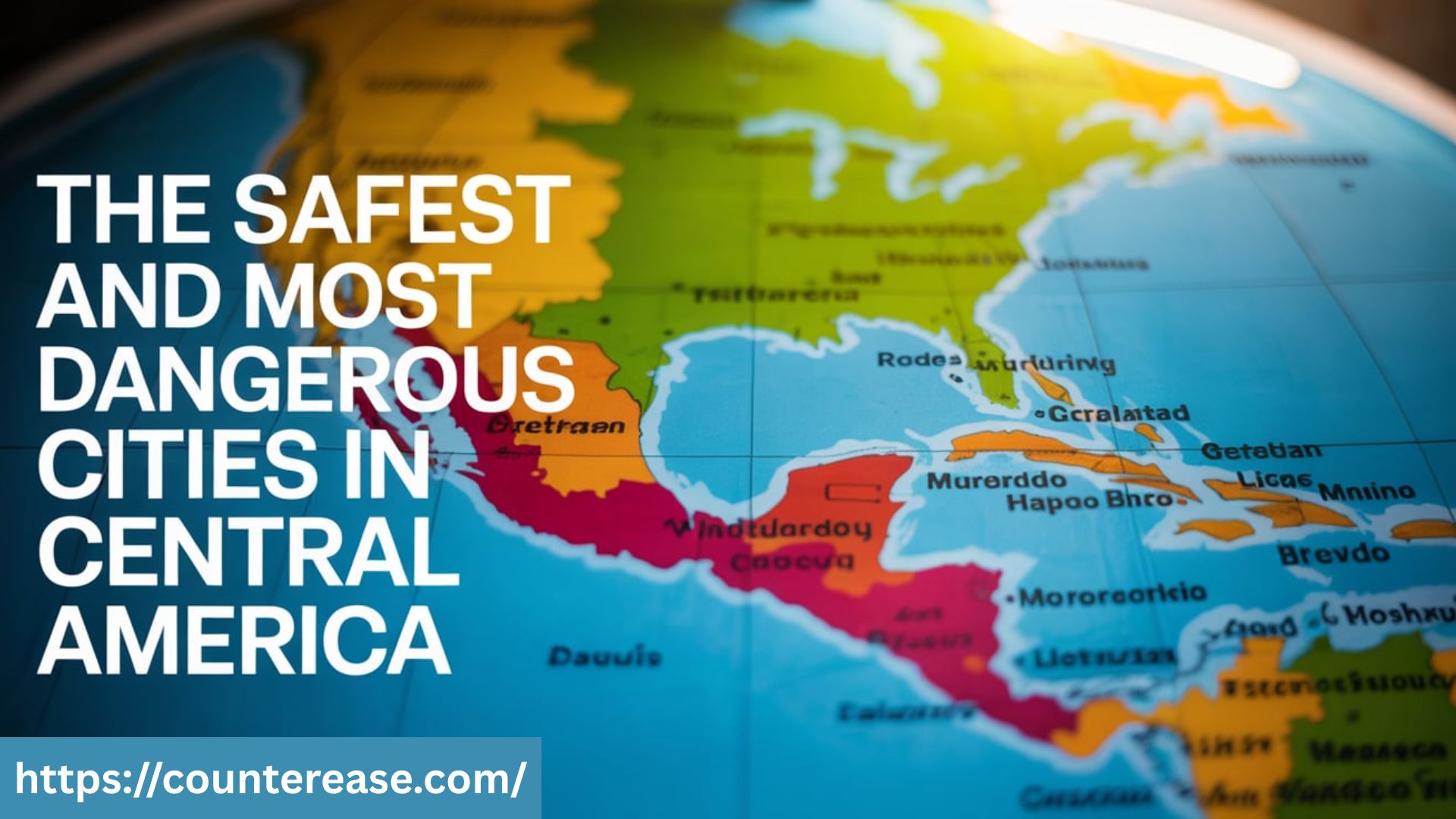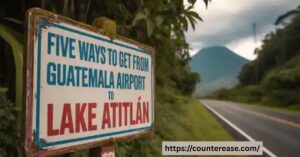The term “safest-and-dangerous-cities-central-america” refers to a broad comparison of urban areas across Central America based on their crime levels, overall security, and traveler safety. This safest and dangerous cities central america includes evaluating factors like homicide rates, gang activity, political stability, and how welcoming these cities are to tourists. While some destinations in the region are praised for their peaceful atmosphere and tourist-friendly infrastructure, others remain under travel advisories due to high crime or civil unrest.
Central America offers dramatic contrasts—lush volcanoes, colonial gems, and warm hospitality coexist with cities struggling under the weight of crime and social challenges. This dynamic reality makes choosing a destination more than just a matter of preference—it’s about staying informed and safe. Travelers who dig deeper find hidden havens of beauty and culture nestled near zones that demand caution. The mix of thrill and risk adds to the region’s allure, pulling in the curious and the adventurous alike.
Understanding the safest-and-dangerous-cities-central-america is vital for any traveler or expat considering a visit or long-term stay. From serene lakeside towns like Antigua Guatemala to bustling capitals like San Salvador, each city carries its own vibe—and its own risks. Knowing which destinations offer security and which to approach with care can help you craft a journey that’s not just memorable, but also safe and smooth.
Central America’s Safest and Most Dangerous Cities: The Complete 2025 Safety Guide
Central America presents a fascinating paradox. Ancient Mayan ruins stand alongside modern cities. Pristine beaches meet volcanic landscapes. Yet beneath this beauty lies a complex security reality that every traveler, expat, and business person must understand.

The region’s safety landscape has shifted dramatically in recent years. Some cities have transformed from no-go zones into viable destinations. Others remain locked in cycles of gang violence and organized crime. This safest and dangerous cities central america comprehensive guide cuts through outdated stereotypes to reveal where you can travel safely—and where you absolutely shouldn’t.
Understanding Central America’s Security Reality
Crime statistics in Central America tell a story of extreme contrasts. While Costa Rica maintains murder rates comparable to many U.S. cities, parts of Honduras and El Salvador still struggle with violence levels that rival active war zones.
The Northern Triangle—comprising Guatemala, Honduras, and El Salvador—historically dominated global murder statistics. However, recent anti-gang operations have created surprising shifts in these rankings.
See Also: A Full Guide to the Cost of Living in Chile
Key Metrics That Define Safety
Homicide rates per 100,000 residents remain the gold standard for measuring urban danger. But smart travelers look beyond basic murder statistics to understand:
- Violent crime patterns affecting civilians
- Tourist safety records in specific neighborhoods
- Police effectiveness and corruption levels
- Gang territory boundaries within cities
Drug trafficking routes heavily influence which areas become crime hotspots. Cities along Caribbean and Pacific coasts often face higher risks due to their strategic locations in international smuggling networks.
The Five Safest Cities in Central America
Heredia, Costa Rica: The Academic Haven
Heredia consistently ranks as Central America’s safest major city. This university town of 125,000 residents maintains a murder rate of just 3.2 per 100,000—lower than most American cities.
Why Heredia excels:
- Strong educational infrastructure creates economic stability
- Robust police presence around university areas
- Limited gang activity due to middle-class demographics
- Excellent healthcare system reduces social tensions
Tourist safety tips for Heredia include avoiding the few sketchy areas near the central market after dark. However, even these zones pose minimal serious threats compared to other regional cities.
Antigua Guatemala: Colonial Charm with Modern Security
Antigua Guatemala leverages its UNESCO World Heritage status to maintain exceptional security standards. The city’s tourist police presence and well-lit colonial architecture create a safety bubble that extends beyond typical tourist zones.
Safety advantages:
- Dedicated tourist police patrol historical areas
- High-end hotels invest heavily in private security
- Walkable city center with excellent lighting
- Strong expat community provides informal safety networks
Petty theft remains the primary concern. Pickpocketing around markets and bus stations requires standard precautions, but violent incidents targeting visitors are exceptionally rare.
Cartago, Costa Rica: Mountain Security
Cartago’s location in Costa Rica’s central highlands provides natural security advantages. The city’s 160,000 residents enjoy one of the region’s lowest crime rates while maintaining easy access to San José.
Security benefits:
- Geographic isolation limits drug trafficking influence
- Strong Catholic cultural influence promotes social stability
- Government investment in infrastructure creates economic opportunities
- Limited gang presence due to rural character
San José Central Districts: Selective Urban Safety
Costa Rica’s capital demonstrates how neighborhood selection determines safety outcomes. The central business districts and upscale residential areas maintain security standards comparable to major European cities.
Safe zones in San José:
- Escazú and Santa Ana suburbs
- Central business district during daytime
- Rohrmoser diplomatic quarter
- University areas around UCR
Travel safety requires avoiding San José’s southern neighborhoods after sunset. However, proper precautions allow safe exploration of most central areas.
David, Panama: Commercial Hub Stability
Panama’s second-largest city benefits from strong commercial ties to the canal economy. David’s 165,000 residents experience significantly lower violence levels than comparable Central American cities.
Safety factors:
- Economic diversification reduces desperation-driven crime
- Strong government presence due to border location
- Investment in tourism infrastructure
- Limited MS-13 and Barrio 18 influence
The Five Most Dangerous Cities in Central America
San Pedro Sula, Honduras: Gradual Recovery from Crisis
Once labeled the world’s murder capital, San Pedro Sula has made remarkable progress. The homicide rate dropped from 142 per 100,000 in 2014 to 25.8 by 2023. However, it remains extremely dangerous by international standards.
Current risks:
- Gang territories still control significant neighborhoods
- Organized crime involvement in local businesses
- High rates of kidnapping and extortion
- Limited police effectiveness outside central areas
Business travelers can operate safely within industrial zones during daylight hours. However, leisure tourism remains inadvisable for most visitors.
Tegucigalpa, Honduras: Capital City Challenges
Honduras’ capital struggles with gang violence despite recent improvements. The city’s mountainous geography creates isolated neighborhoods where criminal organizations operate with impunity.
Danger zones include:
- Comayagüela district
- Outlying barrios on hillsides
- Markets and bus terminals
- Areas near the Choluteca River
Emergency numbers and travel advisories recommend avoiding all non-essential travel to certain districts.
Guatemala City, Guatemala: Urban Jungle
Guatemala City presents extreme contrasts between wealthy Zone 10 and dangerous outer districts. The metropolitan area’s 3 million residents face crime rates that vary dramatically by location.
High-risk areas:
- Zones 3, 6, 7, 12, and 18
- Public transportation routes
- Markets and commercial areas
- Peripheral settlements
Gated compounds in safe zones allow business operations, but leisure visitors face significant risks outside protected areas.
Comalapa, El Salvador: Rural Violence
Despite El Salvador’s national improvements under anti-gang policies, Comalapa remains problematic. This agricultural region suffers from territorial disputes between criminal organizations.
Contributing factors:
- Limited police presence in rural areas
- Migration corridor dynamics
- Economic desperation
- Historical gang influence
San Salvador, El Salvador: Complex Urban Reality
El Salvador’s capital showcases the country’s anti-gang operation results while maintaining serious risks. Government crackdowns have reduced murder rates but created new security dynamics.
Current situation:
- Dramatic reduction in visible gang activity
- Increased police and military presence
- Persistent organized crime in certain sectors
- Tourist zones generally secure during daylight
Methodology: How These Rankings Were Determined
Data Sources and Weighting
Our analysis combines multiple crime statistics sources to create comprehensive safety assessments:
| Criteria | Weight | Source |
|---|---|---|
| Homicide rates | 40% | National police reports, InSight Crime |
| Violent crime incidents | 25% | Municipal crime databases |
| Tourist safety records | 15% | Embassy reports, tourism police |
| Police effectiveness | 10% | World Justice Project |
| Economic stability | 10% | World Bank indicators |
Limitations and Considerations
Crime statistics in Central America face significant challenges:
- Underreporting in areas with limited police presence
- Corruption affecting official data accuracy
- Temporal variations due to seasonal factors
- Different reporting standards between countries
Travel advisories from multiple governments provide additional context but may reflect political rather than purely security considerations.
Surprising Safety Trends Reshaping the Region
Success Stories Worth Celebrating
El Salvador’s transformation stands out as the most dramatic regional change. President Bukele’s controversial anti-gang operations reduced murder rates from 36 per 100,000 in 2019 to under 8 by 2024.
Honduras has achieved similar improvements in major cities. Tegucigalpa and San Pedro Sula both cut murder rates by more than 50% between 2022-2024.
Costa Rica continues demonstrating that Central American countries can maintain safety levels comparable to developed nations through consistent governance and economic development.
Emerging Risk Patterns
Climate migration increasingly affects urban crime patterns. Drought-driven internal migration concentrates vulnerable populations in city peripheries where gang recruitment thrives.
New drug trafficking routes responding to U.S. interdiction efforts create fresh violence hotspots. Caribbean coast cities face particular pressure as traffickers adapt their logistics.
Political instability in Nicaragua has created refugee flows affecting neighboring countries’ security dynamics.
See Also: Review: Alone In Lufthansa First Class A340-600 Washington DC-Munich
Practical Safety Intelligence for Different Travelers
Tourist Safety Strategies
Walkable towns like Antigua Guatemala and Granada, Nicaragua offer the safest introduction to Central America. These colonial architecture showcases provide cultural experiences with minimal risk exposure.

Recommended precautions:
- Use guided tours for initial orientation
- Avoid night travel between cities
- Stay in tourist-friendly neighborhoods
- Utilize hotel zone transportation services
- Carry minimal cash and use money belts
Lake Atitlán exemplifies how natural disaster risk can intersect with security concerns. Volcanic activity requires monitoring alongside crime awareness.
Expat and Long-term Resident Guidance
Gated compounds in cities like Guatemala City and San Salvador provide security but limit cultural integration. Many successful expats choose smaller cities with better overall safety profiles.
Community integration strategies include:
- Learning basic Spanish for police interactions
- Building relationships with neighbors
- Understanding local corruption patterns
- Establishing emergency contacts
- Investing in travel insurance with evacuation coverage
Business Travel Protocols
Commercial districts in most Central American capitals maintain adequate security during business hours. However, after-dark meetings require careful venue selection.
Transportation safety demands using vetted local taxis or hotel-arranged services rather than public transport. Boat taxis around Lake Atitlán and coastal areas require weather and safety assessments.
Looking Forward: 2025 Security Predictions
Political transitions in several countries will test recent security gains. Guatemala’s new administration faces pressure to maintain anti-corruption progress while addressing rural violence.
Economic recovery from pandemic impacts should reduce desperation-driven crime. However, inflation and unemployment remain gang recruitment factors.
Regional cooperation initiatives show promise for addressing transnational crime. Information sharing between police forces has improved drug trafficking interdiction.
Technology adoption by local law enforcement—including predictive policing and improved communications—should enhance urban safety in major cities.
Essential Resources for Safe Travel
Emergency Contacts by Country
Costa Rica: Tourist Police 2511-9439
Guatemala: Tourist Assistance 1500
Honduras: Tourist Police 2280-5579
El Salvador: Tourist Police 2511-8000
Panama: Tourist Police 511-9260
Nicaragua: Tourist Police 2277-0014
Reliable Information Sources
- InSight Crime provides updated crime statistics
- U.S. State Department travel advisories
- Canadian government travel reports
- Local expat Facebook groups
- Professional security consultation services
Safety Equipment Recommendations
Money belts and hidden pouches reduce pickpocketing risks. GPS devices with offline maps prevent navigation-related vulnerabilities. Burner phones with local SIM cards provide emergency communication.
Travel insurance with medical evacuation coverage is essential given healthcare limitations in rural areas and crime hotspots.
Central American Safety
Central America defies simple categorizations. Costa Rica and Panama offer genuine safety alongside natural beauty. Parts of Guatemala, Honduras, and El Salvador remain genuinely dangerous despite recent improvements.
Smart travelers research specific neighborhoods rather than dismissing entire countries. Antigua Guatemala provides safer colonial architecture experiences than Guatemala City. Granada, Nicaragua offers lakeside charm with reasonable security precautions.

The region’s safety landscape continues evolving rapidly. What seemed impossible five years ago—safe travel to El Salvador—now represents reality in certain areas. San Pedro Sula’s transformation from murder capital to manageable risk demonstrates how quickly conditions can improve.
Success requires homework. Study current crime statistics, connect with local expat communities, and maintain flexibility in your travel plans. Central America rewards careful preparation with experiences unavailable anywhere else on Earth.
See Also: The Best Areas and Places to Stay in Panama City, Panama
Whether you’re drawn by eco-tourism opportunities, volcanic adventures, or cultural immersion, understanding the security landscape allows you to explore safely while supporting communities working toward better futures.
The choice isn’t whether Central America is safe—it’s about knowing where safety exists and how to find it.
FAQs
1. Which country in Central America has the lowest homicide rate in the safest‑and‑dangerous‑cities‑central‑america list?
El Salvador recorded the region’s lowest homicide rate in 2024 at just 1.9 per 100,000, making it the safest country in that context.
2. Which country ranks as the most dangerous among the safest‑and‑dangerous‑cities‑central‑america comparison?
Honduras remains the highest, with a homicide rate around 25.3 per 100,000 in 2024, though it has improved significantly.
3. Are any Central American cities listed among the world’s most violent in 2024?
No. For the first time in over 15 years, no Central American city appears on the 50 most violent cities in the world list—an encouraging sign of regional progress.
4. How safe is Panama City in the context of safest‑and‑dangerous‑cities‑central‑america?
Panama City has one of the lowest crime indices in the region (about crime index 48.6, safety index ~51.4), placing it among the safer urban areas.
5. Why has El Salvador seen such dramatic improvement in safety in the safest‑and‑dangerous‑cities‑central‑america ranking?
Tough government crackdowns on gangs since 2022 have reduced violent crime. These policies led to mass arrests and infrastructure investment. Critics raise concerns about human rights, but homicide figures dropped by 98% since 2015.
Conclusion
The safest-and-dangerous-cities-central-america show how different each place can be. Some cities are calm and safe for travelers. Others have problems like high crime and gang violence. It’s important to know which cities are safe before planning a trip. Places like Antigua Guatemala and Panama City are peaceful and well-loved by tourists.
Traveling in the region can be a great experience with the right information. By learning about the safest-and-dangerous-cities-central-america, you can avoid risky areas and enjoy your journey. Stay alert, follow local advice, and respect the culture. With smart planning, you can explore beautiful spots and stay safe at the same time.

Asia Jenni is a passionate travel writer and expert author on CounterEase.com. With a deep love for exploration, she shares insightful travel guides, tips, and destination recommendations, helping travelers discover new places with ease. Her expertise in curating memorable trips and her engaging writing style make her a valuable resource for anyone looking to plan their next adventure.








